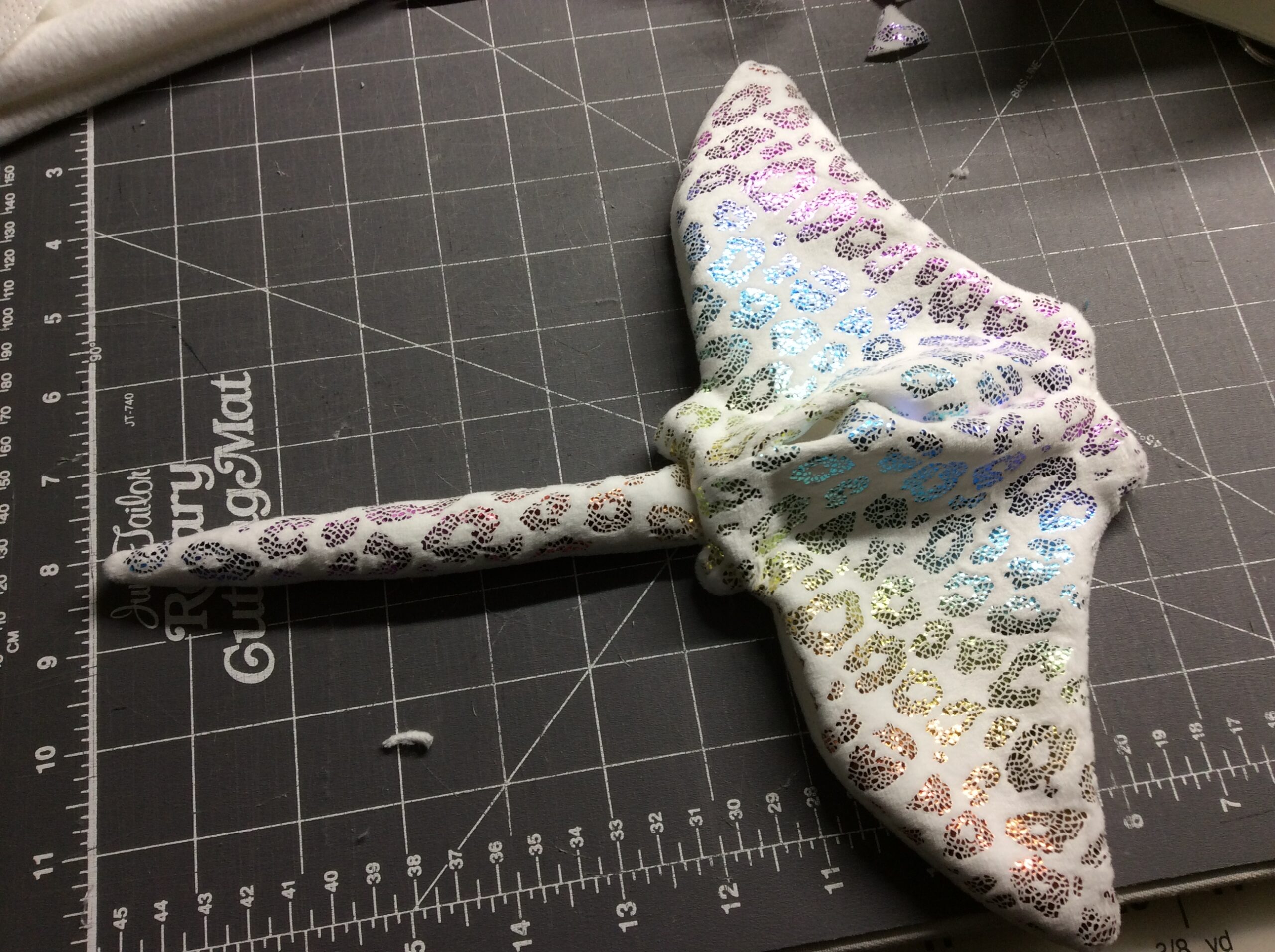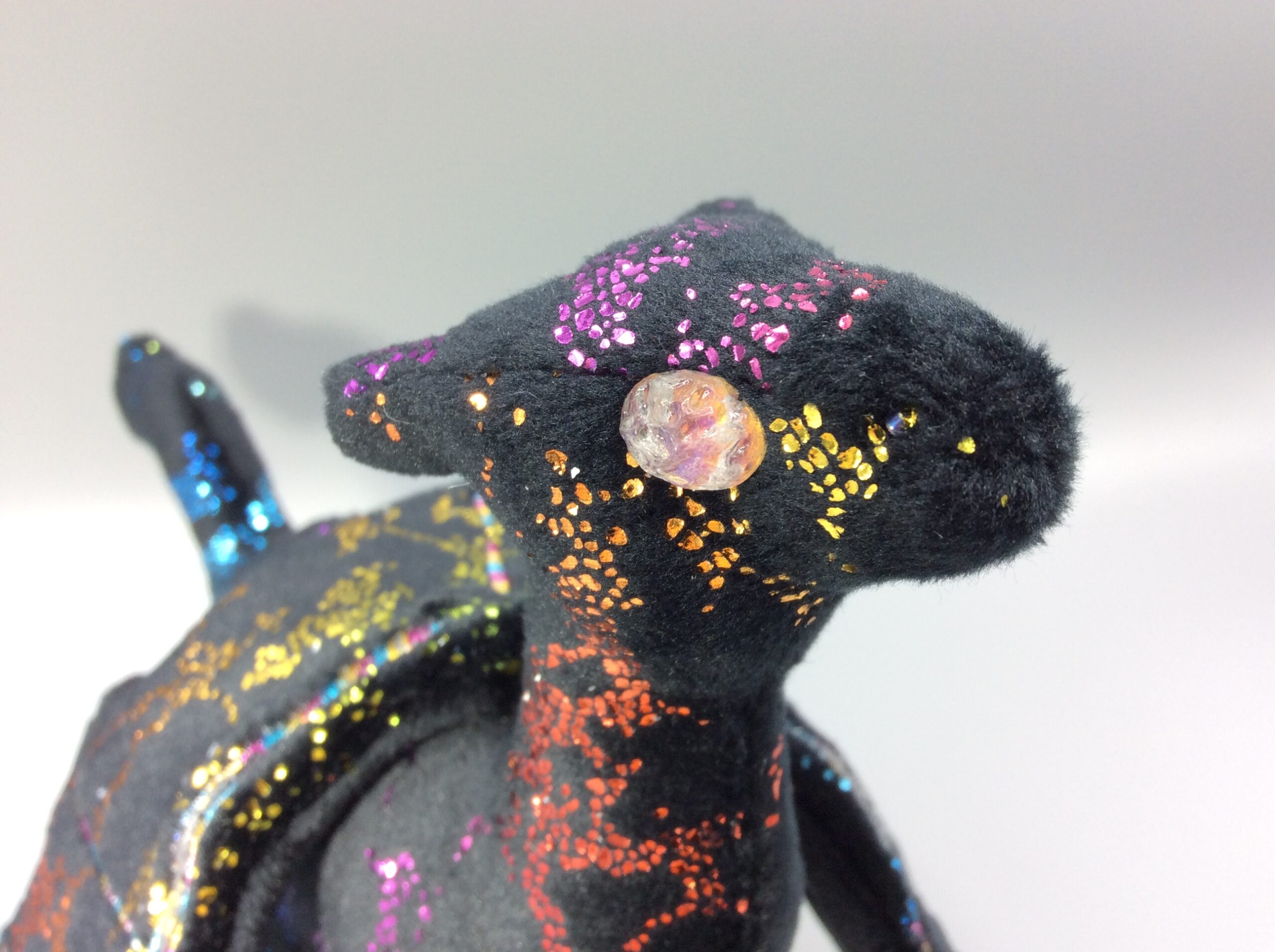

Mastering mochi, round 2
Fri, 20 Nov 2020
I’ve spent a little more time working with the Pure Plush, a/k/a mochi, from JoAnn, and I have some more thoughts.
It’s 94% polyester, 6% spandex. That may not seem like a lot of spandex, but it’s all in the backing (I assume?) so the stretch is the same as a higher percent in a non-pile fabric.
And that pile: it’s very short, with a subtle yet definite nap. There’s a definite bristlebot effect. That means the stuff will slide one direction but not the other, and when you press down on it the nap will tend to push the backing in the direction of the slide. Result: it walks. Pin or, better yet, Wonder-clip the living daylights out of it.
If it’s foiled (and all the cool ones are), it wants to stick just a little bit to the foot if you’re embroidering, top-stitching, or otherwise doing something on the right side of the fabric. That plus the stretch will lead to bloops and bubbles. Use a water-soluble stabilizer or some tissue paper on top; or use a walking foot, teflon foot, or poor-person’s-teflon foot (i.e. a foot with matte cellophane tape on the bottom). The good news: the foil (at least on JoAnn’s version) is very sturdy, can take being turned even on small parts, and the designs are all made of tiny segments or dots so it won’t crack/tear when the fabric stretches.
It’s very stretchy, so it’s going to show every lump of stuffing, and you can’t counteract that by stuffing more firmly because it’s already prone to bloat. There’s a reason Squishmallows are little round blobs. For anything larger than the dragons (this one is only 5″ tall) I’m either going to only make critters with rounded shapes (like the BeeZeeArt stingray in the top image), possibly stuffed with memory foam, or I’m going to interline it with regular minky or fleece for a little more stability.
If you’re using it for toys, be aware that “safety” eyes need interfacing in stretchy fabrics like this. If you look at the inside of a commercial toy – which gets tested to destruction before being mass-produced – you’ll usually see a square of stiff interfacing behind each eye, the textile equivalent of a fender washer. Do this if you plan to use safety eyes on anything, really, that a child might play with.
Even if you’ve Wonder-clipped every seam and fine-tuned your feed dog tension, you may still end up with limbs and tails that want to twist slightly. There’s a trick for that in the teddy-bear world: don’t sew down one seam and up the other. Sew the same direction on both sides of the limb, so at least they’re not working together to corkscrew it. Make sure you sew from the same side (i.e. if you have the outside of a teddy bear arm facing up when you sew it, make sure you do the same on the other side) so if the limbs want to curve they’re at least doing it symmetrically.
One last thing: a lot of people report respiratory irritation when cutting/sewing this kind of thing. Cutting upholstery velvet, also short-pile polyester, was the original reason I got my N95 mask. Good news! This is what the ones with exhalation valves were made for, and they’re much more comfortable. They’re a little more expensive, which is why I got the basic kind. I regretted it for sewing, but it’s been great for the current unpleasantness. I’m going to get a valve one for the privacy of my home.
Comments are not available.
